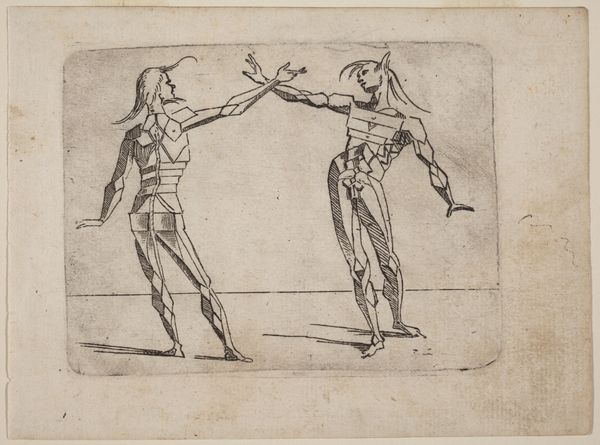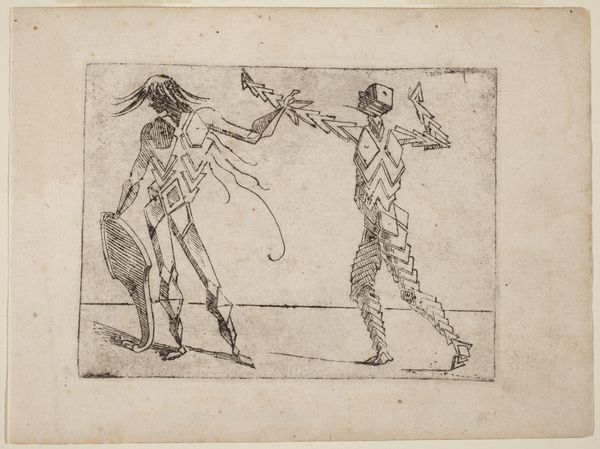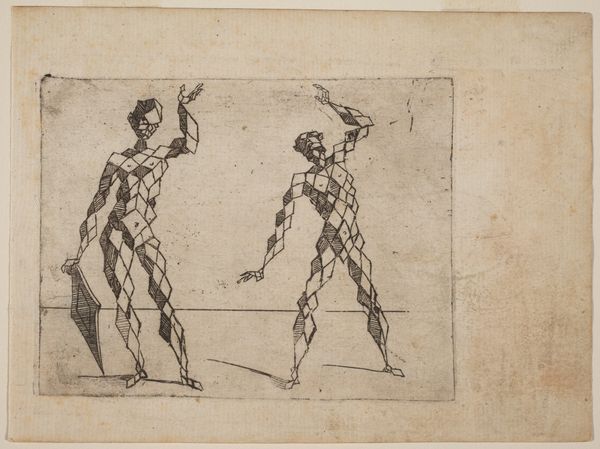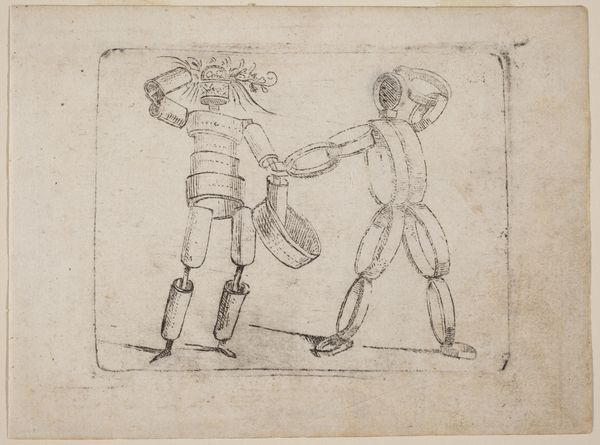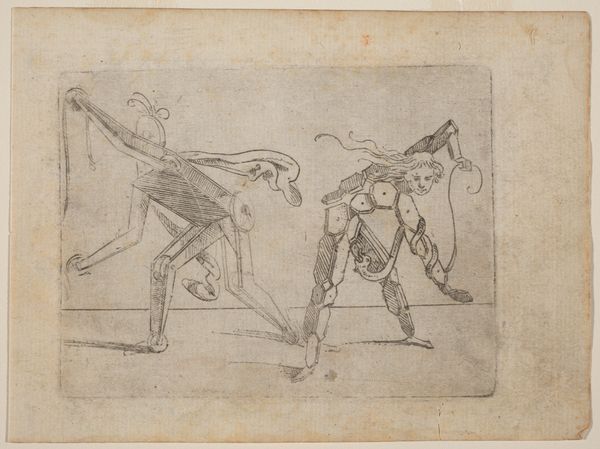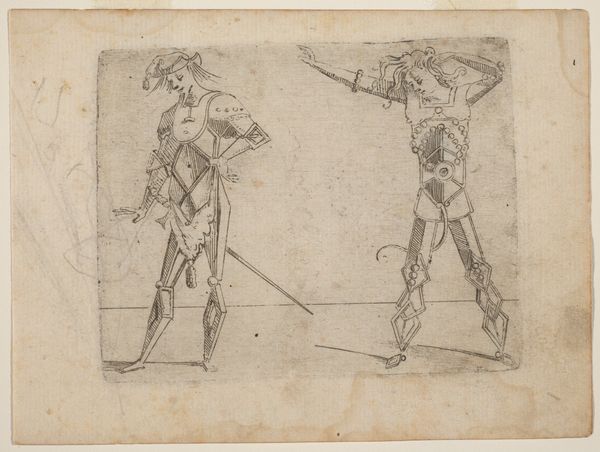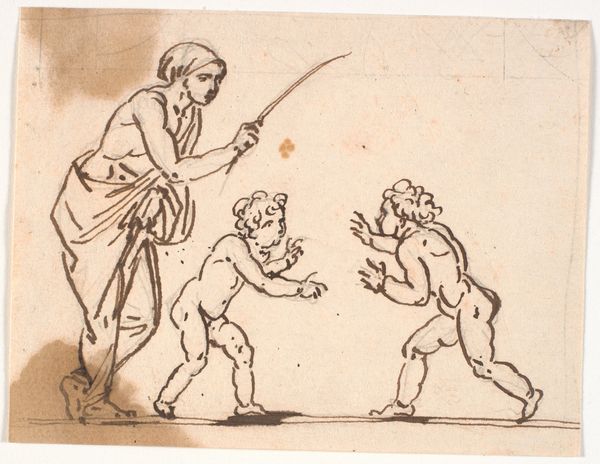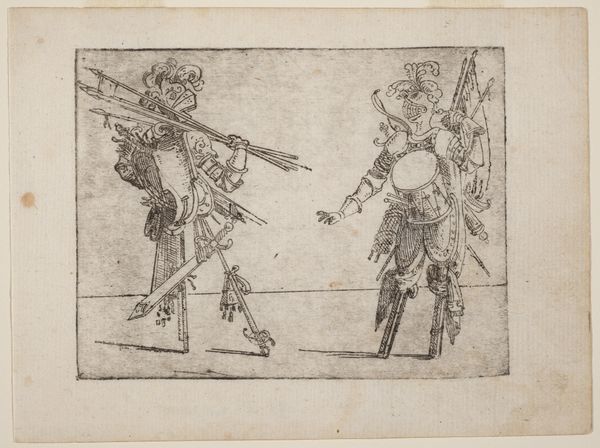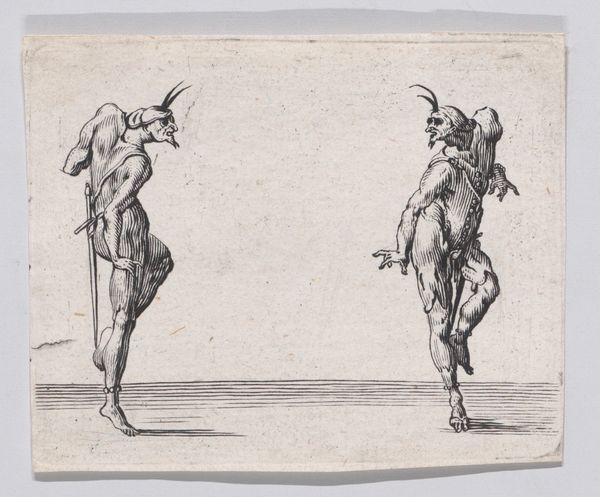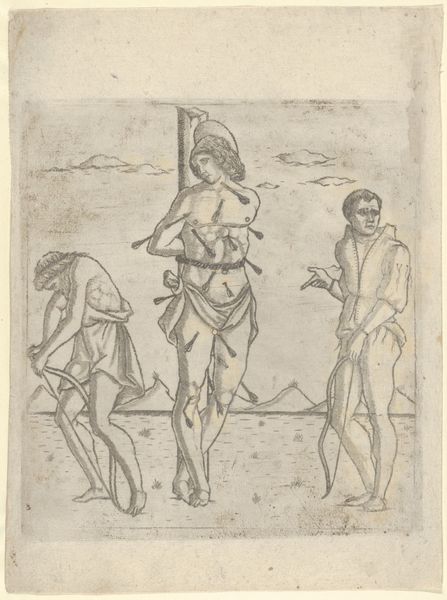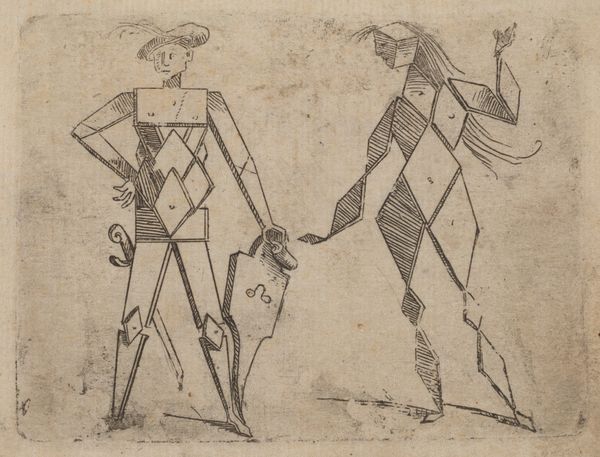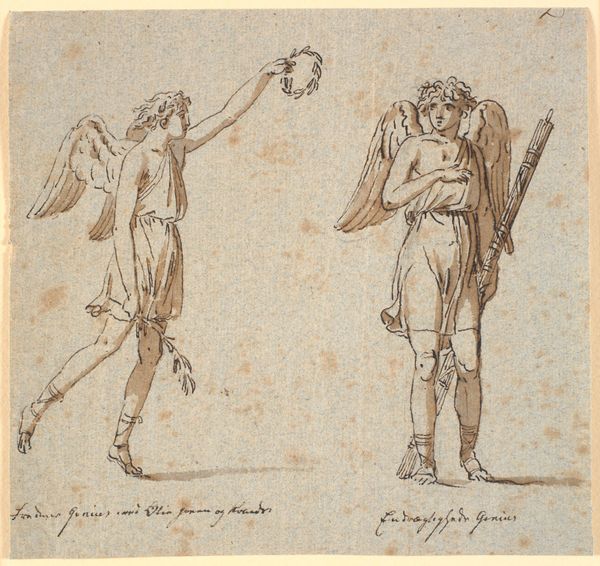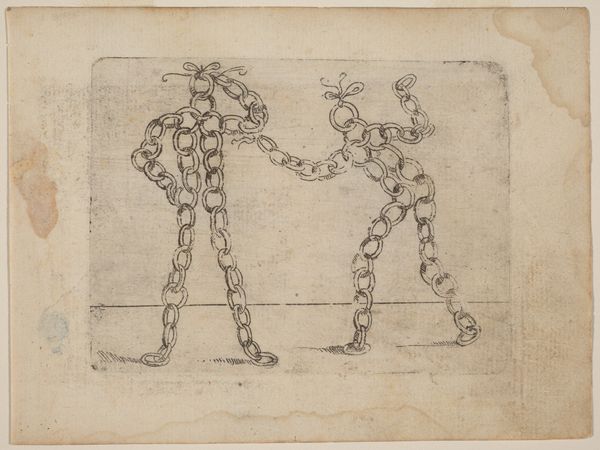
drawing, print, etching
#
drawing
# print
#
etching
#
figuration
#
line
Copyright: National Gallery of Art: CC0 1.0
Editor: We’re looking at Giovanni Battista Bracelli's etching "From 'Bizzarie di varie Figure'," created in 1624. What strikes me first is the linear quality, and how the figures are constructed, almost like architectural diagrams. What do you make of it? Curator: The immediate allure is the geometrical construction of the figures. Note how line is not merely descriptive here; it is constitutive. Bracelli seems less interested in mimetic representation and more in exploring the very building blocks of form. The hatching adds texture, but maintains that the piece adheres to its intrinsic structural logic. Editor: I see what you mean! So, is it less about what they are doing, and more about how they're formed? It’s almost like deconstructing the human figure into basic shapes. Curator: Precisely. Observe the ways in which Bracelli disrupts the conventional figure through strategic angularity. Look, too, at the contrast between organic elements—the hair, the musculature—and those sharp geometric volumes of the body. Notice, finally, that what one figure appears to lack, the other complements. Is there a system? A unity here? Or are we meant to infer a degree of irreconcilability? Editor: That's a compelling way to see it. I initially missed the counterpoint in the rendering of these figures; their individual presentation now feels balanced, or like there's an unspoken symmetry. I appreciate how analyzing these formal elements opens a door to broader questions about representation and artistic intention. Curator: Agreed. Focusing on these components allows a far deeper appreciation, beyond the superficial depiction of subject matter. These structural devices unlock profound readings about perception and materiality, wouldn't you say?
Comments
No comments
Be the first to comment and join the conversation on the ultimate creative platform.

